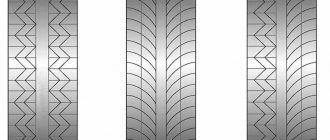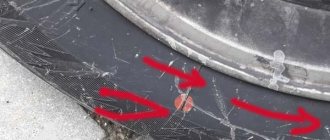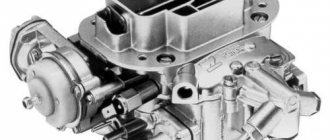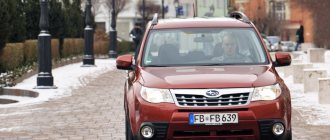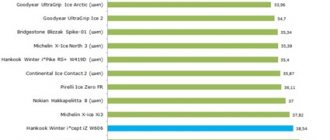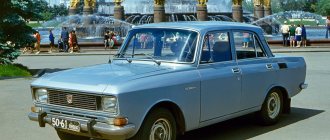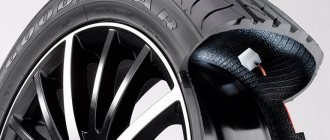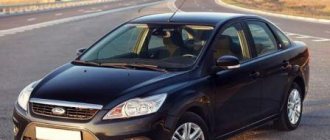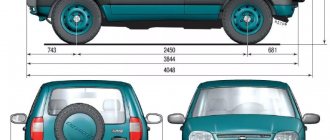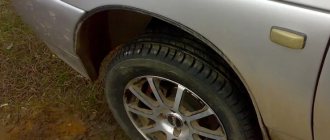Professional tire tests are carried out by expert communities. They have at their disposal all the necessary resources and conditions for an objective assessment, so both journalists and ordinary drivers listen to the opinions of these people.
The most famous expert communities:
- ADAC Club. A general German auto club that traditionally publishes seasonal tire reviews.
- Finnish Research Center Test World. A reputable organization whose reviews are distinguished by the greatest capacity, depth and perfect evaluation criteria.
- Auto Bild magazine. A German publication that conducts car tests, reviews, and ratings.
- Swedish edition Vi Bilagare. They research popular tire models and sizes.
- Automotive magazine "Za Rulem" and newspaper "Autoreview". Russian expert publications testing cars both on domestic tracks and at foreign testing grounds.
Data from these associations, which were obtained experimentally before the start of the 2017-2018 winter season, formed the basis for our review of winter tires for crossovers.
How are winter tires tested?
The testing procedure has a large number of nuances on which the reliability of the result depends.
- For comparison, several tire models of the same price category are taken.
- Tire quality testing is carried out on one car.
- Tests are carried out in certain weather conditions and types of coverage. Usually it is a dry and wet road, snow, ice.
- The results are determined by objective data (time to gain and decrease speed, passing the route) and subjective data (ease of control, convenience), which are determined by the pilot.
- Behind the wheel is a driver who professionally tests cars.
Related link:
Blizzak winter tires.
Based on the testing results, a summary is made and a rating is compiled for all indicators. Such comparisons allow car owners to choose the tire option that suits all their characteristics.
Ice contact
First, let's evaluate longitudinal grip at speeds from 5 to 30 km/h. Nokian has the best acceleration, DoubleStar tires are slower. And the difference is almost double! However, this is not surprising, given that DoubleStar has nothing to really cling to the track with and the protrusion of their spikes is minimal.
Braking from 30 to 5 km/h again remains with Nokian - 13.5 m. Outsiders DoubleStar and Viatti - 21 meters for both at a speed of 30 km/h. It’s better not to even think about what will happen if they have to brake at a speed of 60 or 90 km/h.
Next, we go out onto the ice circle and evaluate the speed of its passage. Conti performed best of all, leaving behind Gislaved and Nokian, who came only third. It was let down by a rather specific behavior, when the front wheels cling perfectly to the ice, and the rear wheels, when rolling freely, slide and take the car to the side.
The Seilun tires had the worst lap. But their longitudinal grip is quite good - fifth place. The most unusual thing is that they were ahead of the “toothless” Goodrich by almost 10%.
Tests of winter studded tires for SUVs 2017-2018
Tires equipped with anti-skid studs are most popular in countries with long and cold winters. They significantly affect the car’s braking distance and its stability on slippery roads, especially during icy conditions.
To test studded winter tires, experts selected several models:
Pirelli Winter Ice Zero
Studded tires from the Italian manufacturer Pirelli have a large selection of sizes. Studs with a double core and thickening in the seat ensure high-quality passage of icy sections of the road. The original rubber compound allows the tires to maintain elasticity in cold weather (up to - 45°C) and sufficient rigidity at positive temperatures (up to + 10°C).
Nokian Hakkapeliitta 9
It features a reinforced sidewall that is resistant to punctures and cuts. It has 2 types of studs for effective traction on various types of road surfaces. Compared to previous models from the Finnish manufacturer, it has fewer studs, which reduces the acoustic effect produced by the tires.
Мі chelin Latitude X-Ice North 3
Michelin developers have created tires specifically for aggressive driving style in winter. The enlarged spikes have a diameter of 9 mm. They fit securely into their sockets thanks to the latest smart thorn technology.
Bridgestone Blizzak Spike-02
The model is available in a wide range of sizes (from 15 to 21 inches) and is popular in the CIS countries. The peculiarity of this tire is the directional stud and the rigidity of the central segment, which is responsible for the handling and directional stability of the car.
Continental Ice Contact 2
Premium segment tires are produced at the Kaluga plant. They have lightweight and ultra-light studs, which make the tire very quiet. Double vulcanization literally “solders” the stud deep into the tread and holds it securely even during sharp maneuvers.
Related link:
Winter tires Nokian Nordman 5: characteristics, cost, reviews
Counting the thorns
Price is not the only thing that differentiates the rivals from each other.
You can also tell a lot about a tire by its studs. The BFGoodrich tire has the fewest teeth – 100, as well as the DoubleStar – 110. They are the only ones that meet the requirements of the Technical Regulations of the Customs Union, which limit the number of studs to sixty per m2 of working surface. In other words, for our size there should not be more than 130 “spines”. There is a loophole for manufacturers to get around this rule - they will have to prove through additional tests that their tire with increased studding does not significantly damage the surface. Obviously, Sailun (138 spikes), Yokohama (160), Nokian (172), Conti (188) and the most spiked Hankook, which we counted 205 teeth, took this more expensive route! The protrusion of the studs meets the requirements of the Technical Regulations for almost all: a value of 0.9-1.5 mm is considered the norm. Only two stand out from the general series - these are Viatti and DoubleStar, whose studs protrude to a minimum of 0.6 mm.
Six competitors represent the SUV category for crossovers and SUVs. Especially for these vehicles, the carcass, shoulder areas, sidewalls and tire tread compound are strengthened for more severe road conditions. This subspecies can be purchased for all price categories. The other eight competitors are simple tires for passenger cars, but with SUV dimensions. According to manufacturers, most modern SUVs have front-wheel drive and rarely leave city asphalt roads.
Test results:
| pros | Minuses | |
| Pirelli Winter Ice Zero | · High level of comfort Handling on ice and dry roads · Directional stability regardless of the type of road | · Insufficient grip on icy roads |
| Michelin Latitude X-Ice North 3 | · Good handling in snow and excellent on the road after rain · Smooth ride, low noise level | · Insufficient number of studs, which causes instability on ice · Long braking distance in icy conditions |
| Continental Ice Contact 2 | · Balance. Shows good results in almost all criteria · Durable stud fastening Comfort in the cabin, soft ride | Low braking performance on wet and slippery surfaces |
| Nokian Hakkapeliitta 9 | · Excellent traction on ice, snow, wet and dry asphalt · Effective braking even with emergency pressure on the pedal | · High noise level · Difficult to get out of track |
| Brigestone Blizzak Spike-02 | · Low cost (about $67 as of November 16, 2018) · Average stability on wet asphalt and snow | Tread hardness · Noisiness Poor handling on ice |
Taking into account all the indicators, we can formulate a rating of winter studded tires for crossovers.
The places were distributed as follows:
- Nokian Hakkapeliitta 9.
- Michelіn Latitude X-Ice North 3.
- Continental Ice Contact 2.
- Pirelli Winter Ice Zero.
- Brigestone Blizzak Spike-02.
Snow traction
On a snowy track, we made five or six combined measurements (acceleration and deceleration) in one direction.
The speed was made a little higher - up to 40 km/h. Accelerate from a standstill from 0 km/h, and leave the braking distance at 5 km/h. In this test the variation is minimal. The braking distance of ten participants is almost the same, the spread is only 20 cm. Continental was the best, DoubleStar was the worst.
The Gislaved with an asymmetric tread and the Nordman with a directional tread accelerate faster. However, both of them stay on the snow more thoroughly than the others. DoubleStar performed worst of all again.
Tests of winter friction tires for SUVs 2017-2018
Among non-studded winter tires, which are often called “Velcro”, experts paid attention to the following models:
Nokian Tires Hakkapeliitta R2 SUV
Scandinavian type tires with directional tread. A special feature of the model is lamella pumps that instantly remove water from under the working surface. R2 rubber contains tiny crystals that act like mini-spikes.
Related link:
Friction tires Nokian Nordman RS2. Advantages of winter Velcro
Continental Winter Contact TS 850P
One of the quietest premium winter tires. Designed for mild European winters. It has an original two-part tread pattern, which ensures maximum safety and comfort of movement.
Goodyear Ultra Grip Ice 2
The tread is made in the form of a herringbone, has zigzag lamellas along the entire working surface. To create the tire, a special Active Grip technology was used, which increases grip on icy roads.
Dunlop Winter Sport 5
Sports model with a developed drainage system. It has different patterns in the central and side parts and reinforced tread blocks. The only rubber in the world that contains silicone.
Michelin Pilot Alpine 4
Soft European rubber with an asymmetric pattern. Like all models of the French manufacturer with the Pilot prefix, Alpin 4 is designed for sports cars and high-speed coupes. Features high speed indices H, V and W.
Results:
| pros | Minuses | |
| Nokian Tires Hakkapeliitta R2 SUV | · Stability and controllability on any surface · Softness and smoothness of movement · High speed performance | · Excessive softness in warm weather · Rubber wears out quickly |
| Continental Winter Contact TS 850P | · Excellent performance on all types of surfaces · Comfort and softness of movement Low noise · Safety | · Not always stable control on ice |
| Goodyear Ultra GripIce 2 | Easy to overcome snow cover · Lateral stability on wet roads · Fast braking on asphalt and snow | Slow steering response on dry pavement |
| Dunlop Winter Sport 5 | · Balanced characteristics · High performance on wet and dry roads Handling and stability on ice and snow | · Increased fuel consumption |
| Michelin Pilot Alpine 4 | Best traction among all tested · Low acoustic effect · Stable behavior, controllability on any track | · Relatively long braking distance on dry asphalt · Increased gasoline consumption |
Related link:
Test of winter tires in size 185/65 R14 and R15. Who became the winner of the 2018-19 ranking?
Based on tests of winter tires for crossovers 2017-2018, you can make a rating. The studied models took the following places:
- Continental Winter Contact TS 850P.
- Nokian Tires Hakkapeliitta R2 SUV.
- Goodyear Ultra Grіp Ice2.
- Dunlop Winter Sport 5.
- Michelin Pilot Alpin 4.
Let's summarize the rating:
All of the winter tires listed are the best in their classes for winter. The rating was compiled primarily based on owner surveys, reviews on forums, and a general comparison of characteristics.
If you want to buy the best winter tires, consider all of the options listed. If they are included in our rating, then they deserve attention and, even more so, purchase.
If you are careful when choosing winter tires, be sure to read the reviews. This list of reviews about winter tires will be constantly updated.
The test results showed:
| Discipline | Place |
| Braking on dry asphalt | 9 |
| Braking on wet asphalt | 5 |
| Handling on dry asphalt | 8 |
| Driving on wet asphalt | 8 |
| Braking on snow | 8 |
| Snow control | 5 |
| Hydroplaning | 9 |
| Economical | 11 |
| Noisiness | 8 |
As the 2022 r17 winter tire test for a crossover shows, this model is distinguished by consistently good performance in almost all disciplines. The exception is the economy, which is below average due to the strong rolling resistance of the tires.
Handling on snow
We will consider maneuvering and directional stability on a straight road at a speed of 100 km/h.
And we immediately have two winners: Nokian and Formula. They can be praised for their clear course when driving straight, firm steering response, and clear and soft reactions to steering wheel rotation when the driver corrects direction. DoubleStar once again demonstrates that driving it is a lost cause. The car begins to scour the straight road, even if no one touched the steering wheel. Very weak reaction when adjusting direction, large and sudden drifts that provoke the driver to take emergency action.
Next we went to the highway, where the Tiguan will suddenly change lanes at speeds from 40 to 60 km/h, typical for urban conditions. The highest score - eight points - goes to Formula and Yokohama tires. Any driver of average skill can handle the turns.
DoubleStar again performed the worst: weak reactions, huge steering angles and drifts when entering a turn. If you increase the speed, the skidding only increases. The driver will have to quickly adjust the movement and act proactively. One mistake and you are guaranteed to fly into oncoming traffic.
Test of winter tires for crossovers in size 18 inches
Tires in size R18 were also tested by the Germans from Auto Bild magazine. This time the test subject was Nokian WR A4225/40 R18.
Among 9 studless winter tires with similar parameters, A4 took the following positions:
| Discipline | Place |
| Braking on dry asphalt | 1 |
| Braking on wet asphalt | 9 |
| Handling on dry asphalt | 1 |
| Driving on wet asphalt | 10 |
| Braking on snow | 10 |
| Snow control | 9 |
| Hydroplaning | 10 |
| Economical | 1 |
| Noisiness | 3 |
As we can see, the test of 2017-2018 r18 winter tires for a crossover showed the strengths and weaknesses of this model. Based on the results, we can say that Nokian WR A4 are suitable for snowless and dry winters and do not perform well on snow and wet asphalt.
Related link:
Nokian Nordman 7 - premium tires at an affordable price.
At the same time, the tires are soft, almost silent and very economical.
Competitors in order
Up to 4,000 rub.
per tire The list of the cheapest models opens with the Russian Viatti Bosco Nordico and the Chinese Sailun Ice Blazer WST 3 and DoubleStar WinterKing DW07. The rest are a little more expensive: two domestic Pirelli Formula Ice and Cordiant SnowCross 2 SUV, as well as the Chinese Triangle Icelink Sport Utility.
Up to 6,000 rub. per tire
There are only six tires in the mid-price range. Nordman 7 SUV and Yokohama IceGuard IG65 assembled in Russia. Gislaved Nord Frost 200 SUV and BFGoodrich g‑Force Stud are Russian-assembled, they will charge a little more. Hankook Winter i*Pike RS2 from Korea, and Toyo Observe Ice-Freezer SUV from Malaysia.
More than 6,000 rub. per tire
These two from the premium group are bitter rivals: the Russian-made Nokian HKPL 9 SUV, the German Continental IceContact 3.
Conclusion
This review of winter tires 2017-2018 for crossovers allows us to draw the following conclusions:
- There is no universal rubber that is best for any weather and road conditions. Each model has positive and negative sides.
- Tires from leading manufacturers are usually distinguished by high quality and performance characteristics, but any company may have unsuccessful models.
- By studying the 2017-2018 winter tire ratings and comparing test results, the driver will be able to choose the best tire option for his vehicle, road conditions and weather.
Handling on ice
Handling was tested on a closed icy track with ESP disabled. The participants were treated to many straights, sharp and smooth turns, a high-speed “esque”, and, finally, half a circle of constant radius, which allows you to evaluate the behavior of the car on a long arc.
Conti pulled ahead, delighting the experts with a soft and clear steering response and predictable behavior. You gave him the highest score of eight points.
DoubleStar is trailing behind again. A car on these tires literally leads the driver by the nose, trying to send him into a skid every second. At first it seems that the car can go faster, but then the car seems to break loose and begins a very long slide, which unexpectedly ends with a sharp contact. The cabin shakes if the wheels are turned out beforehand, and the car spins into a tailspin. The turns are such that no electronics can cope with them.
Handling track
In this test, participants will stay close to the extreme riding conditions, but resist going into extreme slides. Four models received the highest eight points: Continental, Formula, Cordiant and Toyo. Shina Cordiant was a pleasant surprise, as previously she had shown rather average results.
DoubleStar failed the test - the car's steering wheel has no control over the track. Very long reactions, wide arc of rotation, skidding and loss of stability. It doesn’t get any easier as the car constantly slips. One disappointment follows another!
The next race is active driving with a reaction test in sliding. Here again we are pleased with the Cordiant, which copes even with aggressive driving. Nokian and Toyo are breathing down his neck. All three received their eight.
Does anyone else doubt which participant turned out to be the weakest here? That's right: DoubleStar. Constant long slides, excessively sharp grip with “shooting” of the stern. The traction is so weak that even adding gas does not solve the yaw problem. Driving turns into a constant battle with your own car, so as not to lose control and end up in a skid. After the trip there is more than enough adrenaline.
Continental Conti lce Contact 2
Unlike the previous participant in the rating, this is a tire for really harsh winters.
Photo: sti-club.su Engineers used several innovative solutions in this model:
- firstly, the mass of new spikes has been reduced by 25%. This made it possible to increase their number per unit area of the tire by 50%, that is, by half . The fact that the road surface will not wear out more is proven by special tests carried out jointly with specialists from the University of Karlsruhe. At the same time, the noise level, which is often presented as one of the most serious disadvantages of studded tires, is also significantly reduced.
- secondly, the location of the spikes has been changed. Now they are installed so that they only come into contact with the ice that has not been crushed by other “nails”.
- thirdly, there are special cavities around the spikes - “pockets”. Crushed ice falls into them before being pushed out by centrifugal force.
Last but not least, it was these innovations that ensured that Continental Conti lce Contact 2 tires became one of the confident leaders in their class. For the Russian market, the model is produced at a plant near Kaluga.
Standard sizes and prices
The price list starts at approximately 3,500 rubles per piece. The upper limit is about 15 thousand.
The choice is very wide. From 175/65/R14 to 275/50R20. That is, these tires are suitable for both modest VAZ vehicles and the latest and very expensive premium foreign cars. There are also separate “modifications” with the SUV index - for crossovers.
Choose by cost
As the economic crisis flares up, manufacturing companies cannot help but change their pricing policies, and no one can predict how much tires will cost next month. However, we will try to categorize the participants depending on their “fair” value and the real price tag on the market.
For budget purchases, Formula Ice tires (15%) are suitable. Slightly more expensive are the Viatti Bosco Nordico (11%), Sailun Ice Blazer WST 3 (8%) and Cordiant SnowCross 2 SUV (4%). When buying the Triangle Icelink Sport Utility kit, you will have to pay an extra 3%, and for the DoubleStar WinterKing DW07 you will pay 13%.
Tires with an average price tag are not so profitable. You will be able to profit the most by purchasing the Gislaved Nord Frost 200 SUV (11%). Slightly less profit with Yokohama IceGuard IG65 (9%), Nordman 7 SUV (8%) and Hankook Winter i*Pike RS2 (6%). For a set of BFGoodrich g‑Force Stud and Toyo Observe IceFreezer SUV tires, the overpayment will be 11% and 16%, respectively.
Everyone understands that top-end tires are not a category on which you need to save. The actual price tag of Continental IceContact 3 is 9% higher than the “fair” cost. Nokian HKPL 9 SUV is the most expensive with its 21% overpayment.
The economical option is not the most justified
The first thing you need to understand is that it makes no sense to waste money on purchasing good tires when operating equipment in ice and snowdrifts. After all, the degree of production of tires determines the transport manager’s ability to get out of an emergency traffic situation. Such wheels are made of rubber of good strength, which does not lose its elasticity even in severe frosts and provides the greatest “grip” to the ice crust. There is also an all-season vehicle designed for various weather conditions, regardless of the time of year, although in the summer it can forgive mistakes in driving, which cannot be said about winter driving.
Familiarization with tires for the cold season
The review of winter tires includes products from famous manufacturers that have gained recognition among motorists. Such reliable companies still receive rave reviews from customers. There are 2 types of tires designed for use in cold climates:
- European - they tend to hold up well on an asphalt road covered with water, they do not have spikes, and such tires do not work well in deep snow;
- Scandinavian ones have thorns, which makes them stand out compared to European ones.
In general, if you listen to the recommendations of competent people, it is better to have both of these types of tires in stock. After all, for the first month of winter, European tires will do, while for the rest of the harsh season it is better to use studded models on the market. Separately, you need to inspect the tread, the design of which is to provide water-repellent grooves for driving on wet surfaces. Otherwise, the predictability of the further trajectory of the car becomes very difficult, which does not have the best effect on driving safety.
What to choose?
Preferred options for purchases are ContiVikingContact 6 and Hakkapeliitta 9 SUV - flagships in the classes of studded and friction tires. They are distinguished by balanced grip characteristics without pronounced weak points. Following them are the IceContact 2 studded tires, which outperform the Hakka R2 Velcro tires due to their performance in snow disciplines.
And other rubber models (UltraGrip Ice 2, Latitude X-Ice North 2+, etc.) deserve attention. Before purchasing, compare the main advantages of the selected winter tires with the operating characteristics of the vehicle and your own driving style.
The winter is coming. It's time to prepare the sleigh. Sellers are starting to import winter tires, and buyers are starting to think about what to change into. In the conditions of our roads and climate, we need rubber that can cope equally well with icing, mud, and water. But is this possible? In practice, there is an eternal dilemma - to choose non-studded Velcro or studs. We present you a tire rating for the 2017-2018 winter season, which includes the most popular and proven models.
What formed the basis for this rating?
- Reviews from motorists
- Tests carried out with different cylinder models
As a result, we have the following overview.
deep snow
Survival in snowdrifts is an extremely important topic for owners of SUVs and crossovers.
For some motorists, even a one-wheel drive car is not a reason not to park in snowdrifts. Nokian and Nordman showed everyone their class in deep snow. With full throttle and tension, the car confidently maneuvers in knee-deep snow. The car even drives in reverse when a huge pile of snow rises in front of the bumper.
DoubleStar drove into a snowdrift and stayed there. It’s as if the Tiguan was put on summer tires and for some reason thrown into the snow.
Safety first
Many car enthusiasts approach the question of which winter tires are best to choose from the purse side. When making a purchase, they select tires based on planned and available funds. This approach is due to the high prices for quality products.
It is worth noting that purchasing inexpensive models from little-known manufacturers results in the following problems:
- unpredictable behavior on slippery snowy roads;
- poor handling;
- high noise level;
- aquaplaning;
- reduced service life.
Creating an emergency situation on the road can not only cause an accident, but also harm the health of road users. The choice of winter tires must be made taking into account operating conditions, the nature of the climate and expert recommendations. Remember that imaginary savings can affect your safety.
“>
Pirelli Winter Ice Zero
These studded tires have excellent performance on snow and ice.
Photo: photos-mt.kcdn.kz Italian engineers also decided to “play” with the shape of the studs - they made them double (Dual Stud). The density of small lamella grooves has also been increased. True, experts note that the tires were clearly tested only on cars with an installed stability control system. In its absence, the indicators are much more modest. Well, things are not the best with comfort, but this is the price to pay for cross-country ability and stability.
Sizes and prices
Price – approximately from 3900 to 18000 rubles per piece.
For “regular” passenger cars - from 185/60R14 to 275/35R20. For crossovers, the model range just starts at 215/70R16 and ends at an impressive 275/40R22. There are also “modifications” with run flat technology, which allows you to drive without a spare tire at all.

